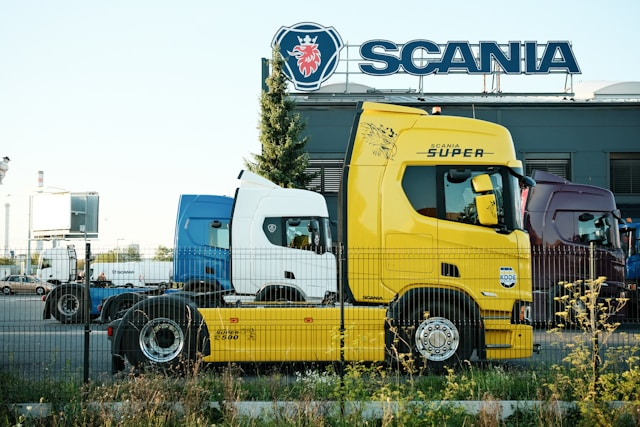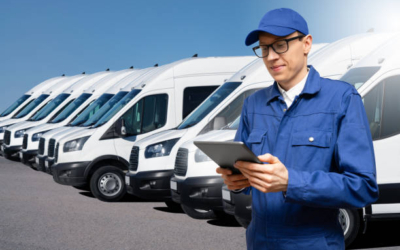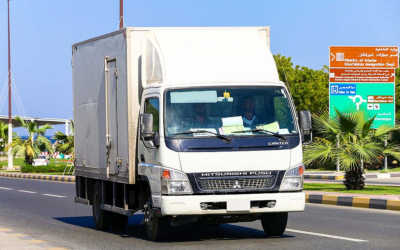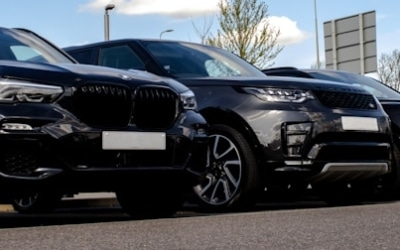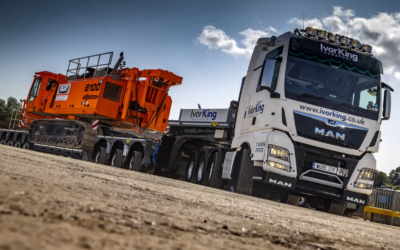Fleet Cybersecurity: Protect Connected Vehicles & Data
As a fleet manager, you’re responsible for keeping vehicles moving, drivers safe and costs under control. Increasing connectivity — from telematics and dashcams to driver apps and cloud back‑ends — brings efficiency, but it also brings new digital risks. This article explains practical, priority‑based steps to improve fleet cybersecurity across people, devices and systems so you can reduce downtime, protect sensitive data and meet customer and regulatory expectations.
Why fleet cybersecurity matters
The modern threat landscape
Connected fleets are no longer isolated mechanical systems — they’re distributed IT assets. Modern vehicles include telematics units, cellular modems, GPS, firmware‑updatable controllers and mobile apps that all expand the attack surface. Criminals and organised actors probe weak endpoints, exploit default credentials, intercept unencrypted traffic or leverage exposed APIs. Nation‑state actors, ransomware groups and opportunistic thieves can all target fleets for financial gain or to disrupt operations. Familiarise yourself with the types of attackers and common motives so you know what you’re defending against.
Operational, financial, and safety impacts
A successful breach can ripple through your operation: vehicles immobilised by ransomware, location data leaked to enable theft, or driver personal data exposed leading to fines and reputational damage. Beyond compliance costs and incident response, there’s the hard cost of downtime, replacement vehicles and potential safety incidents. Improving fleet cybersecurity isn’t just an IT concern — it’s central to operational resilience and driver safety.
Regulatory and customer expectations
Regulators and customers increasingly expect demonstrable security controls. Data privacy laws and sector‑specific guidelines require appropriate handling of driver and telematics data. Customers and partners may demand vendor security attestations as part of procurement. Demonstrating a mature approach to fleet cybersecurity can be a competitive advantage when tendering for contracts or negotiating partnerships.
Common vulnerabilities in fleet environments
Telematics units, OBD devices, and in‑vehicle networks
Telematics devices and OBD dongles are vital for tracking and diagnostics but often come with weak default credentials, unsecure firmware update processes or unencrypted communications. In‑vehicle networks (CAN bus, Ethernet) were never designed with security in mind; if an attacker reaches a telematics unit they can sometimes pivot into vehicle control systems. Prioritise devices with secure boot, signed firmware and proven vendor update mechanisms.
Mobile apps, driver devices, and BYOD risks
Drivers’ smartphones and tablets frequently bridge the gap between public networks and fleet systems. Unmanaged devices can introduce malware, expose credentials or leak location and customer data. Implement device management policies, restrict sensitive app functions on unmanaged devices and ensure mobile apps follow best practices for authentication and encryption.
Cloud, APIs, and third‑party integrations
Your backend systems, APIs and third‑party integrations are attractive targets. Misconfigured cloud storage, weak API authentication, or overly permissive integrations can expose large volumes of sensitive data. Ensure APIs use strong auth, practice least privilege and perform regular security reviews of vendor integrations. For more on demonstrating telematics value while managing risk, see our guide on Telematics ROI: Step‑by‑Step Guide for Fleet Managers.
Risk assessment and prioritisation for fleets
Asset inventory and data classification
Start by cataloguing what you have: vehicles, telematics units, dash cameras, back‑end servers, user accounts and the types of data they handle. Classify data by sensitivity — driver PII, customer job details, location histories — and identify assets that, if compromised, would cause the most harm. A clear inventory makes prioritisation and budgeting far more effective.
Threat modeling and attack‑surface mapping
Map realistic attack paths: for example, driver phone → telematics app → backend API. Consider privilege escalation opportunities and lateral movement between systems. This low‑effort modelling highlights where simple controls (network segmentation, MFA) can drastically reduce risk. You may also want to review how telematics integrates with maintenance systems — understanding these flows helps mitigate cascading failures; see our posts on Predictive Maintenance for Fleets to align security with uptime goals.
Risk scoring and remediation prioritisation
Use a simple scoring model — likelihood × impact — to rank findings from your assessment. Focus first on high‑impact, high‑likelihood items such as exposed cloud storage, unauthenticated APIs or devices with unpatched firmware. Establish a remediation roadmap that ties fixes to measurable outcomes like reduced downtime or lower Mean Time To Repair (MTTR).
Want to see how Traknova secures fleet telematics end‑to‑end? Book a live demo with Traknova to walk through our security features and how they map to your environment: Book demo.
Technical controls and operational best practices
Network design: segmentation and secure connectivity
Design networks so that vehicle systems, telematics units and office IT are logically separated. Use firewalls and VLAN segmentation to restrict lateral movement. Protect all routes with secure tunnels (VPNs) and ensure remote management ports are closed or behind strong authentication. Segmentation reduces blast radius when an endpoint is compromised and is a foundational element of resilient fleet cybersecurity.
Device hardening and lifecycle management
Choose telematics and dash camera vendors that support secure provisioning, signed firmware updates and remote attestation. Implement policies for device onboarding, periodic firmware patching and secure decommissioning. Maintain a central inventory so you can quickly identify affected devices during an incident. If you use dashcams, consider hardware options and cloud controls — learn more at our Dash Cameras page.
Data protection, access control, and monitoring
Encrypt sensitive data both in transit and at rest. Enforce strong access controls (role‑based access, least privilege) and require multi‑factor authentication for admin access. Centralise logging and monitor for anomalies: sudden surges in data export, unusual login locations, or unexpected firmware update attempts. Early detection reduces incident impact and speeds recovery.
Policies, vendor management, and incident preparedness
Governance, policies, and employee training
Policies should cover acceptable use, device management, password standards and patching timelines. Train drivers and staff on phishing, secure handling of devices and what to do if they suspect a security issue. Regular refreshers and simple, behaviour‑focused guidance are more effective than long manuals.
Vendor/security due diligence
Vetting your telematics, cloud and service vendors is critical. Request security documentation, inquire about firmware signing, secure update processes, penetration test results and contractual security SLAs. Include audit rights in contracts and ensure vendors align with your risk appetite. If you’re evaluating telematics partners, our Prove Telematics ROI guide helps balance cost and capability during vendor selection.
Incident response, recovery, and continuous improvement
Prepare an incident playbook that assigns roles, communication templates, and escalation paths. Conduct tabletop exercises with operations, IT and legal teams to validate procedures. Keep backups and test restores for critical systems — speed of recovery is often the best way to limit operational and reputational damage. After action, update controls based on lessons learned and track metrics that demonstrate measurable improvement.
Conclusion
Investing in fleet cybersecurity protects your operation from costly downtime, data breaches and safety incidents. Start with a clear asset inventory and risk assessment, then apply layered controls: network segmentation, device hardening, data protection and vendor diligence. Couple technical controls with strong policies and training to make security part of everyday fleet operations. If you’re ready to see security applied in a fleet context, Traknova can demonstrate how these controls work in practice.
Ready to secure your fleet? Book a personalised consultation or demo with Traknova to review your environment and see practical fixes in action: Book demo.
Frequently asked questions
How much does implementing fleet cybersecurity cost?
Costs vary by fleet size, device inventory and existing IT maturity. Prioritise high‑risk, high‑impact fixes first (e.g., patching, closing exposed APIs). Many controls — like segmentation and access policies — are low cost but high impact. For telematics investments, evaluate total cost against reduced downtime and loss prevention benefits.
Can I secure my fleet without replacing existing telematics devices?
Often you can dramatically reduce risk without wholesale replacement by tightening backend controls, network segmentation and enforcing strong authentication. However, some older devices lacking secure update mechanisms should be phased out. Use an inventory and risk score to guide replacement decisions.
What are the top three quick wins for fleet managers?
1) Enforce multi‑factor authentication for admin and vendor access. 2) Segment vehicle/telematics networks from corporate IT. 3) Ensure firmware updates are signed and applied promptly.
How does data privacy relate to fleet cybersecurity?
Data privacy and cybersecurity go hand in hand. Protecting driver and customer data from unauthorised access is both a security control and a privacy obligation. Implement encryption, access controls and data retention policies to satisfy both concerns.
Where can I learn more about secure telematics and fleet practices?
Explore our related posts on telematics ROI, predictive and preventive maintenance to align security with operational goals: Telematics ROI, Predictive Maintenance for Fleets and Fleet Telematics: Cost‑Cutting Playbook.
We’d love your feedback: did this guide help you identify one or two actions you can take this week? Please leave a comment or share on social media to help other fleet managers. Which area concerns you most — device security, vendor risk, or driver‑facing apps? Your answer will help shape future posts.
If you’d prefer a one‑to‑one walkthrough, book a demo or Contact us for a tailored consultation. Don’t forget to follow and share — protecting fleets is a team effort.

